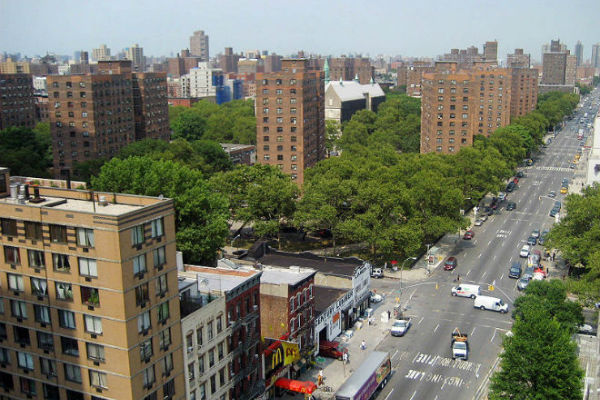 A chart showing that in the first two and a half years of the de Blasio administration, nine of ten development deals for public land went to for-profit developers.’
A chart showing that in the first two and a half years of the de Blasio administration, nine of ten development deals for public land went to for-profit developers.’
Over the past year, from East Harlem to Crown Heights, we’ve heard residents demand that when the city develops public land, that it partner with non-profit developers. The thinking is this: because they aren’t seeking to pad salaries and often have longstanding connections with the communities they serve, nonprofits are more likely to create more units of low-income housing, be in touch with the needs of the neighborhood, and ensure their buildings remain affordable forever—not just until their subsidy contracts with the city expire.
Nonprofit community development corporations used to dominate the affordable housing sector, but as City Limits reported at length in April, many nonprofit developers say that recent mayoral administrations—including the de Blasio administration—are instead opting to work with for-profit developers. The de Blasio administration has disputed this characterization, but it’s also no secret that the city seeks to find development partners that can deliver the most bang for the buck.
A new report by the Association for Neighborhood Housing and Development (ANHD) offers new statistics on the de Blasio administration’s relationship with the nonprofit sector. ANHD, an umbrella organization of non-profit housing and community groups, used data recently made available through Local Law 44, which was approved by City Council in 2012 and requires the Department of Housing Preservation and Development (HPD) to make available certain information regarding housing developments that receive city assistance.
Of 193 deals closed during the first two and a half years of de Blasio’s term, ANHD found that for-profit developers dominated new construction deals, receiving 74 percent of those deals, which contained 80 percent of total units. In many of these deals, developers reached out to the administration for financing, but looking just at the cases in which the city actively solicited a developer with a Request for Proposal (RFP) to build on public land, the picture is even more stark: Of 10 projects on city-owned land, nine went to for-profits and only one went to a non-profit. (Although some development teams are a joint partnership between a nonprofit and a for-profit developer, ANHD categorized each joint-venture as either nonprofit or for-profit based on which was benefiting from the mortgage.)
Become a Harlem Insider!
By submitting this form, you are consenting to receive marketing emails from: . You can revoke your consent to receive emails at any time by using the SafeUnsubscribe® link, found at the bottom of every email. Emails are serviced by Constant Contact








